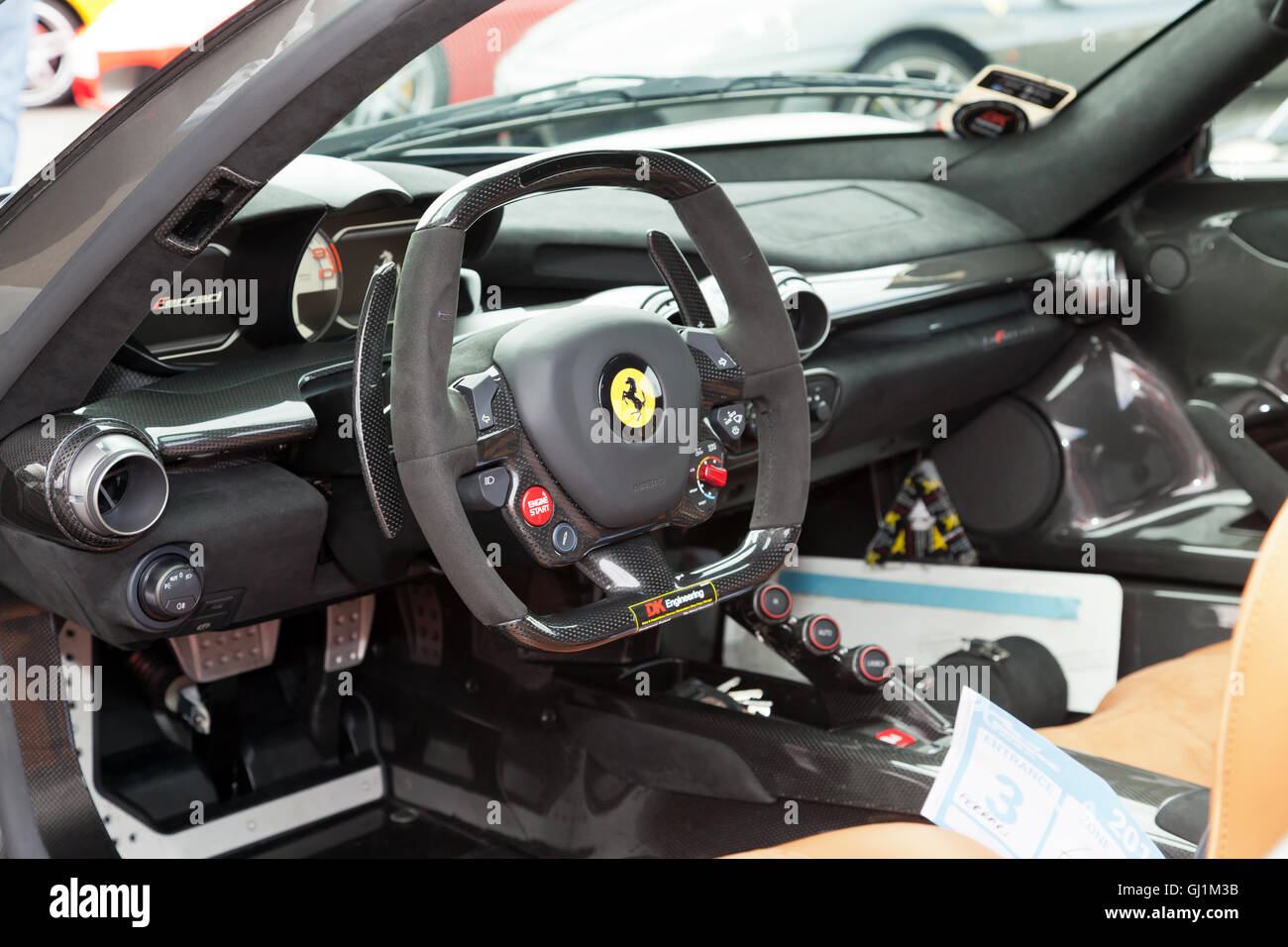Cockpit interior view of LaFerrari hybrid sports car on display in the Ferrari Owners Club area of the Silverstone Classic 2016

Image details
Contributor:
John Gaffen / Alamy Stock PhotoImage ID:
GJ1M3BFile size:
60.2 MB (1.5 MB Compressed download)Releases:
Model - no | Property - noDo I need a release?Dimensions:
5616 x 3744 px | 47.5 x 31.7 cm | 18.7 x 12.5 inches | 300dpiDate taken:
29 July 2016Location:
Silverstone Circuit, Towcester, Northamptonshire, NN12 8TNMore information:
LaFerrari is the first mild hybrid from Ferrari, providing the highest power output of any Ferrari whilst decreasing fuel consumption by 40 percent. LaFerrari's internal combustion engine is a mid-rear mounted Ferrari F140 65° V12 with a 6.3-litre (6262 cc) capacity producing 800 PS (588 kW, 789 bhp) @ 9000 rpm and 700 N·m (520 lbf·ft) of torque @ 6, 750 rpm, supplemented by a 163 PS (120 kW; 161 bhp) KERS unit (called HY-KERS), which will provide short bursts of extra power. The KERS system adds extra power to the combustion engine's output level for a total of 963 PS (708 kW; 950 bhp) and a combined torque of 900 N·m (664 lb·ft). Ferrari claims CO2 emissions of 330 g/km. The engine's bore and stroke is 94×75.2 mm with a compression ratio of 13.5:1 and a specific power output of 94 kW (128 PS) per litre. It is connected to a 7-speed dual-clutch transmission and the car is rear-wheel drive. The car is equipped with carbon-ceramic Brembo discs on the front (398 mm) and rear (380 mm), [12] with the car sitting on Pirelli P Zero Corsa tires measuring 265/30 R 19 and 345/30 R 20 respectively. LaFerrari uses a carbon fibre monocoque structure developed by Ferrari's F1 technical director Rory Byrne, with a claimed 27 percent more torsional rigidity and 22 percent more beam stiffness than the Enzo. It has a double wishbone suspension in the front and a multi-link suspension in the rear. LaFerrari has a number of electronic controls including ESC stability control, high performance ABS/EBD (anti-lock braking system/electronic brake distribution), EF1-Trac F1 electronic traction control integrated with the hybrid system, E-Diff 3 third generation electronic differential, SCM-E Frs magnetorheological damping with twin solenoids (Al-Ni tube), and active aerodynamics to enable maximum performance